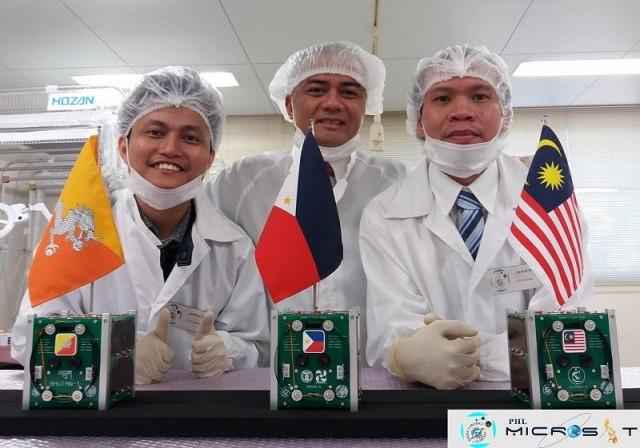Maya-1 cubesat launch signals next phase of Pinoy space exploration
On June 29, 2018, students, faculty, engineers, and the media waited with bated breath, as they sat in the University of the Philippines Diliman’s Meralco Hall and watched the livestream of the launch of Maya-1, the first Filipino-made cube satellite.
Along with its sister satellites UiTMSAT-1 (from Malaysia) and Bhutan-1 (from Bhutan), Maya-1 was part of the payload of the SpaceX Falcon-9 CRS 15 rocket.

At exactly 5:41 p.m. (Manila time), the rocket took off from Cape Canaveral in Florida to make its way to the International Space Station (ISS).
Proudly Pinoy
Two Pinoy engineers, Joven Javier and Adrian Salces, worked on Maya-1 as part of the BIRDS-2 Cube Satellite Project. Established by Japan’s Kyushu Institute of Technology (Kyutech), the BIRDS-2 project was designed to provide assistance to countries in building and launching their own satellites into space.
_at_Meralco_Hall_-_Photo_credit_-_Jo_Brianne_Briones_(2)_2018_07_02_14_31_45_0.jpg)
Javier served as the Philippine team’s Electronics PCB Designer as well as the overall Project Manager for BIRDS-2. Salces meanwhile focused on developing the Ground Station Segment and Communication Subsystem for Maya-1.
The cube satellites (or cubesats) built under the BIRDS-2 program all come equipped with the same functionalities, including cameras, audio transmitters, and the capability to collect sensor data. They are designed to form a low-Earth orbit (LEO) constellation upon their deployment into orbit sometime in August 2018, and will work together in comprehensively covering their designated areas.
A small step and a giant leap
Maya-1 is not the Philippines’ first foray into space. Diwata-1 the first non-commercial Pinoy-made microsatellite, was designed by the PHL-Microsat team and released into orbit over two years ago.
Earlier than that, the Philippines also controlled Agila-1 and Agila-2, a pair of privately owned communication satellites developed by foreign scientists.
But Maya-1 is significant because aside from being the first Pinoy-made cubesat, it will also be part of an ongoing collaborative effort between various countries (including the Philippines) to establish and run an international ground station network that will control and operate the satellites.
Space saver
“Maya-1 [serves as] an educational platform to learn how to build low-cost satellites, rather than spend millions and billions on commercial satellites,” said Javier in an email interview.

Right now, Javier and Salces are coordinating with PHL-Microsat to assist them in the Space Environment Testing phase for Diwata-2, which is scheduled for deployment later this year.
After Javier and Salces complete their respective masteral and doctoral studies at Kyutech, they will share the lessons they learned throughout the course of the BIRDS-2 program with local Pinoy space engineers. Participating in building more cube satellites — this time, right on Philippine shores — is also in the cards.
_2018_07_02_14_31_45_1.jpg)
At present, the Philippines relies heavily on space technology from other countries using the borrowed data and equipment to fill critical needs in local weather monitoring, communications, transportation management, agriculture, and other crucial industries. On average, the country spends about Php 3.5 billion per year on this.
The ability to build its own satellites, as well as the establishment of its own sustainable space program, would cut the Philippines’ space-related expenditures by about a billion pesos. — LA, GMA News



